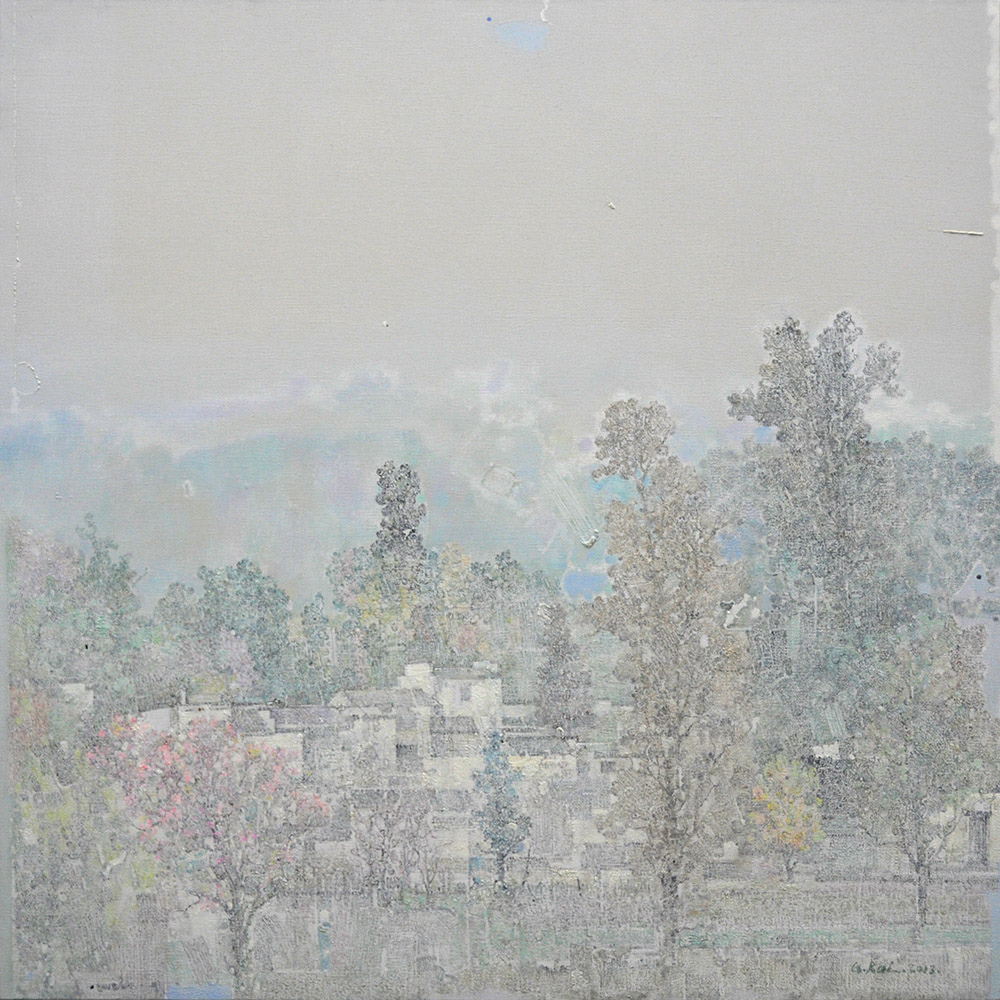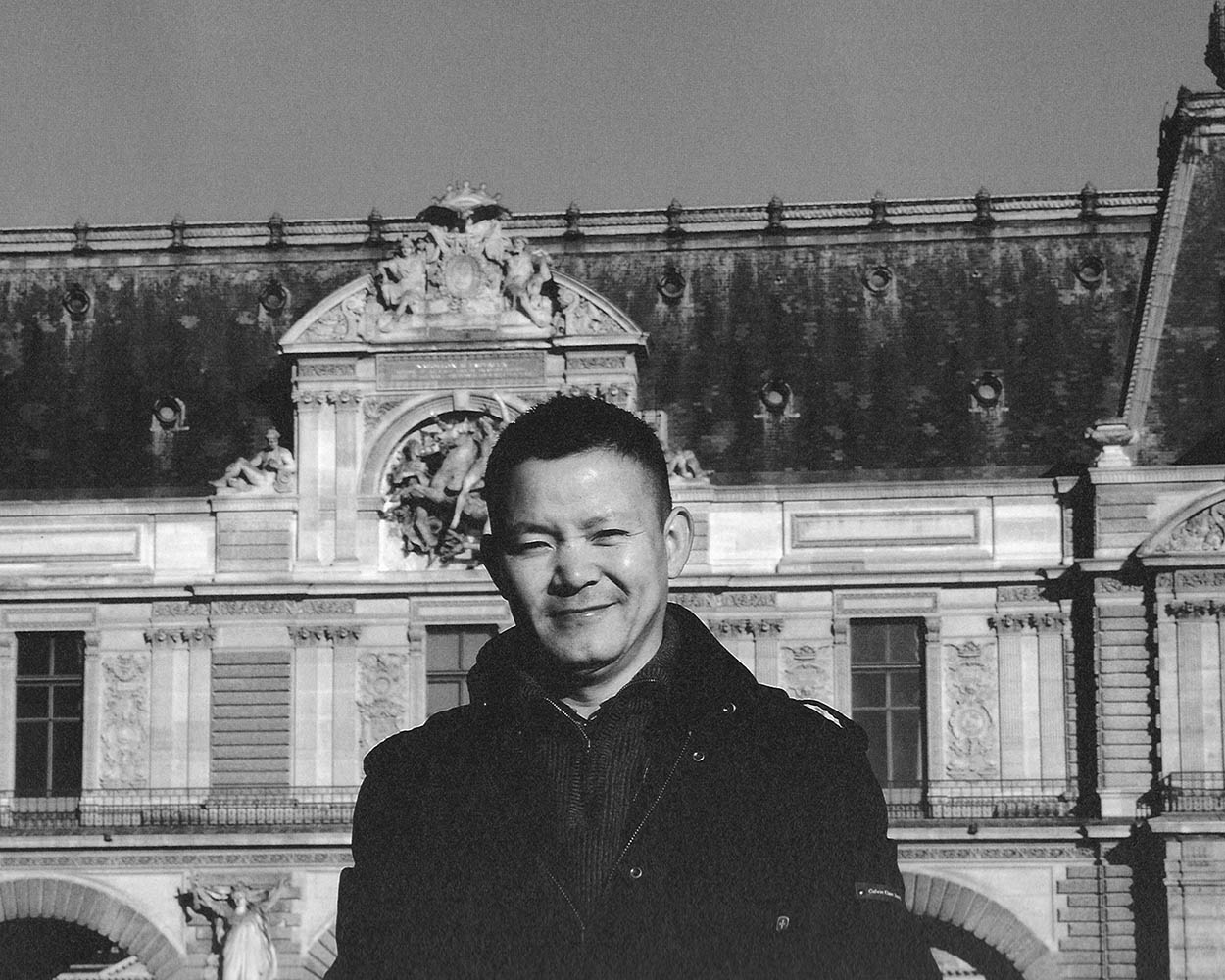by Richard MC Chang (Translation by Timothy Chang)
Guo Kai’s oil on canvas work Distant Sounds in Autumn Woods illustrates a historic cultural region known as Huizhou, situated in what is now China’s southern Anhui province and northern Jiangxi province. In late imperial times, the region produced generations of merchants who conducted trade nationwide, but spent their wealth building their native community. The large estates and ancestral halls the merchants built were installed with their values of diligence, frugality, and education. Thus the Huizhou style of architecture became known for both its elegance and wealth.
Guo Kai revisits Huizhou’s cultural heritage with monochrome palette. The landscape is shrouded in the mists of time. Hints of colour, such as light yellows, greens, or pink emerge from time to again, like memories of the past. Figurative elements of distant mountains, luscious trees, and historical houses all remain silent, frozen in time.
The rejection of urban life and a yearning for nature is an ongoing theme in Guo Kai’s work. Like the historic merchants of Huizhou, Guo Kai always returns to the countryside, to the pastoral landscape. With his sketchbook and camera, Guo Kai carefully studies the land. Touring the large estates and walking through the ancestral halls, the artist searches high and low, hoping to catch a glimpse of the past.
Although Guo Kai medium of choice ranges from oil, acrylic, and tempera, his work is reminiscent of traditional Chinese ink painting. His brush captures the land on which he was born and raised. The serene and elegant atmosphere of the past is reborn in his paintings.

Relatred Journals
Catalog Entry
Bright blooming flowers cover the foreground of Attachment · Whispers 3. Two young women in plain white clothing stand behind the flowers, holding hands in a close embrace. In examining the relation between the foreground flowers and the sitters, the picture plane appears skewed. The flowers seem superimposed onto the composition, creating a sense of ambiguity that also relate to the nature and relationship of the two young women.
Guo Kai, Attachment · Whispers 3 (detail), 2022 © Guo Kai
Essay
“I believe a painting should be like a poem, a song, or a beautiful prose. That is why painting a painting should be like writing a poem, singing a song, or writing a piece of prose.” – Fu Baoshi.
The first impression given by Guo Kai’s paintings is like that of a poem, a song, or a beautiful piece of prose. Poetry in painting has always been an integral part of classical Chinese painting, and Guo Kai’s paintings are particularly poetic. Plain and unadorned titles, such as Spring Stream, Winter Water, Reflection of the Bridge, or Quiet Pavilion, paired with his paintings become pieces of silent poetry.
Guo Kai examines tempera paint, Hefei, Anhui, 2018. Photo: T. Chang
Essay
Conscious Landscape
Henry David Thoreau’s Walden, or Life in the Woods is recognized as his greatest literary classic on natural living. With his use of simple and eloquent language, Thoreau advocates a spiritual return to the basics, which strikes at the very heart of the materialistic nature of modern society. Centuries later, Walden is still celebrated by those wishing to escape the mundane matters of daily life, and to once again return to nature’s fond embrace, as a hermit or philosopher.
Guo Kai, Paris, France, 2009. Photo: Courtesy of Guo Kai



